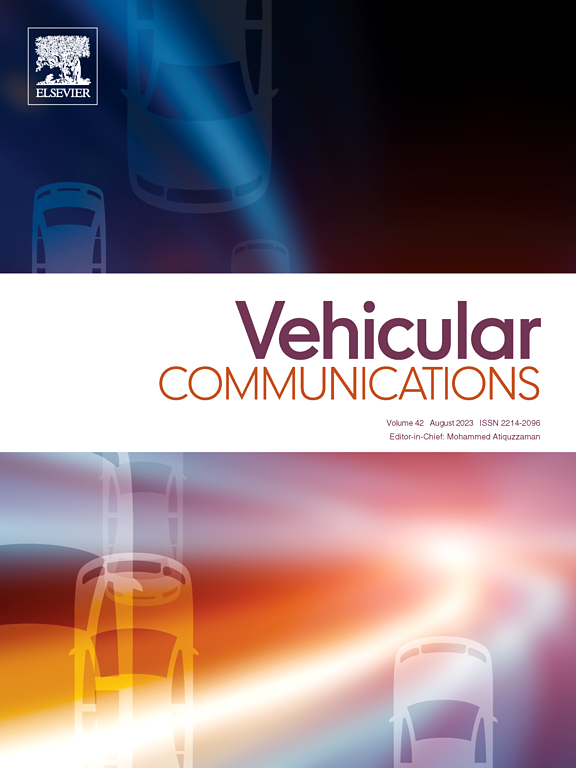Advancing connected vehicle security through real-time sensor anomaly detection and recovery
IF 6.5
2区 计算机科学
Q1 TELECOMMUNICATIONS
引用次数: 0
Abstract
Connected Vehicles (CVs) are a crucial element in the evolution of smart transportation systems, utilizing communication and sensing technologies to interact with each other and with infrastructure. As these vehicles become more interconnected, the risk of their components being affected by anomalies or intentional malicious attacks grows. It is essential, therefore, to identify and filter out any anomalous data to ensure reliable decision-making. Existing solutions for anomaly detection in CVs include methods such as kalman filter, cumulative summation, convolutional neural networks and other machine learning models. However, a prevalent issue is the limited universality of anomaly datasets along with the variability introduced by simulated data. Additionally, there are few methods for recovering the network from anomalies using sensor information. In this paper, we address these limitations by utilizing the Tampa CV (TCV) dataset and incorporating anomalies such as bias, noise, and spikes. Furthermore, we present a novel method for real-time anomaly detection in CVs using Bayesian Online Change Point Detection (BOCPD). We propose a unique recovery mechanism that employs Bayesian forecasting to interpret identified anomalies, marking the first of its kind in this field. This approach significantly enhances the security of CV systems by seamlessly merging instant detection with swift recovery, ensuring continuous protection against data integrity threats. Results demonstrate that the proposed model achieves an average accuracy improvement of 53.83 % over other machine learning models. This paper makes advancement through real-time anomaly detection and recovery mechanisms, thus significantly improving the resilience of smart transportation systems against data integrity threats.
通过实时传感器异常检测和恢复,提高联网车辆的安全性
互联汽车(cv)是智能交通系统发展的关键要素,它利用通信和传感技术相互之间以及与基础设施之间进行交互。随着这些车辆变得更加互联,其组件受到异常或故意恶意攻击影响的风险也在增加。因此,必须识别和过滤任何异常数据,以确保可靠的决策。现有的CVs异常检测解决方案包括卡尔曼滤波、累积求和、卷积神经网络等机器学习模型。然而,一个普遍的问题是异常数据集的有限通用性以及模拟数据引入的可变性。此外,利用传感器信息从异常中恢复网络的方法很少。在本文中,我们通过利用坦帕CV (TCV)数据集并结合偏差、噪声和峰值等异常来解决这些限制。此外,我们提出了一种利用贝叶斯在线变化点检测(BOCPD)实时检测CVs异常的新方法。我们提出了一种独特的恢复机制,利用贝叶斯预测来解释识别的异常,这在该领域是第一次。这种方法通过无缝地将即时检测与快速恢复结合起来,显著提高了CV系统的安全性,确保了对数据完整性威胁的持续保护。结果表明,与其他机器学习模型相比,该模型的平均准确率提高了53.83%。本文通过实时异常检测和恢复机制取得了进展,从而显著提高了智能交通系统对数据完整性威胁的弹性。
本文章由计算机程序翻译,如有差异,请以英文原文为准。
求助全文
约1分钟内获得全文
求助全文
来源期刊

Vehicular Communications
Engineering-Electrical and Electronic Engineering
CiteScore
12.70
自引率
10.40%
发文量
88
审稿时长
62 days
期刊介绍:
Vehicular communications is a growing area of communications between vehicles and including roadside communication infrastructure. Advances in wireless communications are making possible sharing of information through real time communications between vehicles and infrastructure. This has led to applications to increase safety of vehicles and communication between passengers and the Internet. Standardization efforts on vehicular communication are also underway to make vehicular transportation safer, greener and easier.
The aim of the journal is to publish high quality peer–reviewed papers in the area of vehicular communications. The scope encompasses all types of communications involving vehicles, including vehicle–to–vehicle and vehicle–to–infrastructure. The scope includes (but not limited to) the following topics related to vehicular communications:
Vehicle to vehicle and vehicle to infrastructure communications
Channel modelling, modulating and coding
Congestion Control and scalability issues
Protocol design, testing and verification
Routing in vehicular networks
Security issues and countermeasures
Deployment and field testing
Reducing energy consumption and enhancing safety of vehicles
Wireless in–car networks
Data collection and dissemination methods
Mobility and handover issues
Safety and driver assistance applications
UAV
Underwater communications
Autonomous cooperative driving
Social networks
Internet of vehicles
Standardization of protocols.
 求助内容:
求助内容: 应助结果提醒方式:
应助结果提醒方式:


